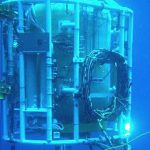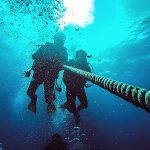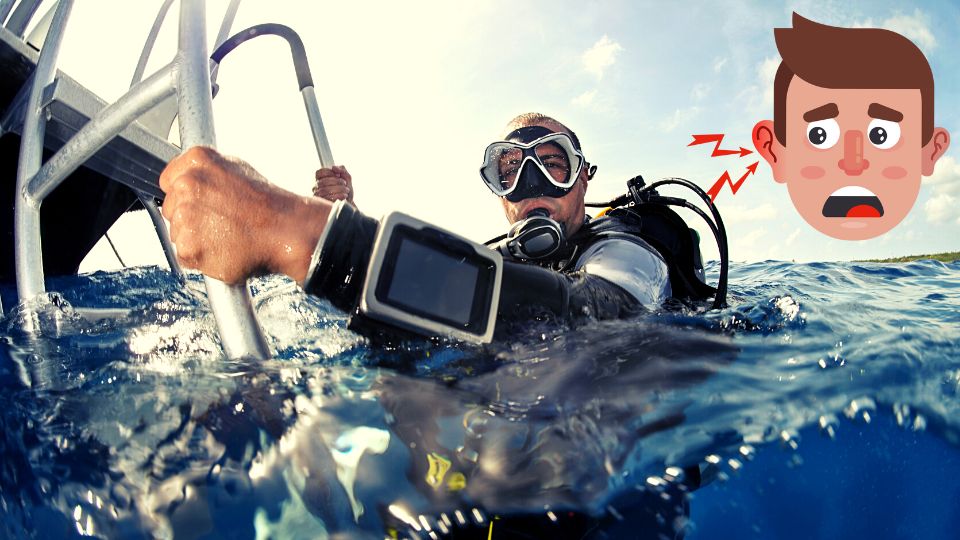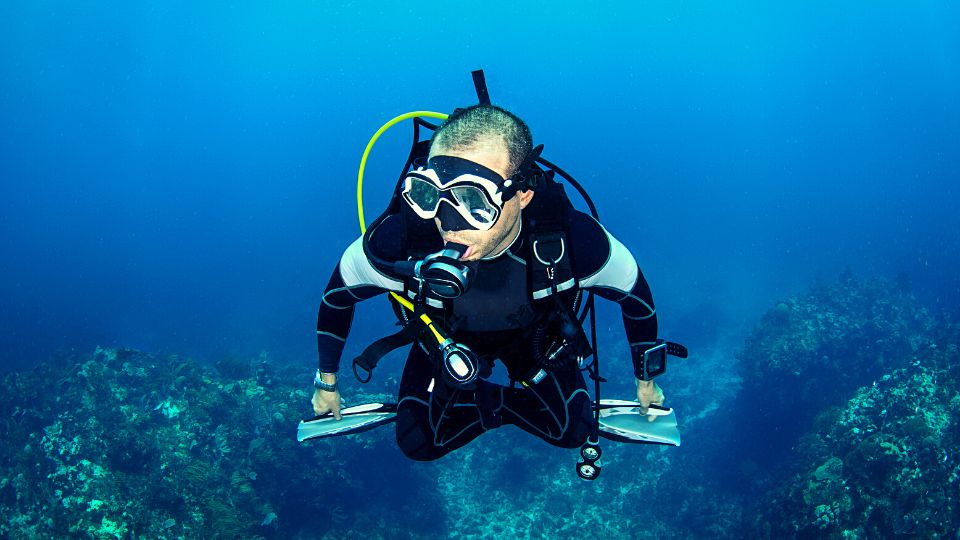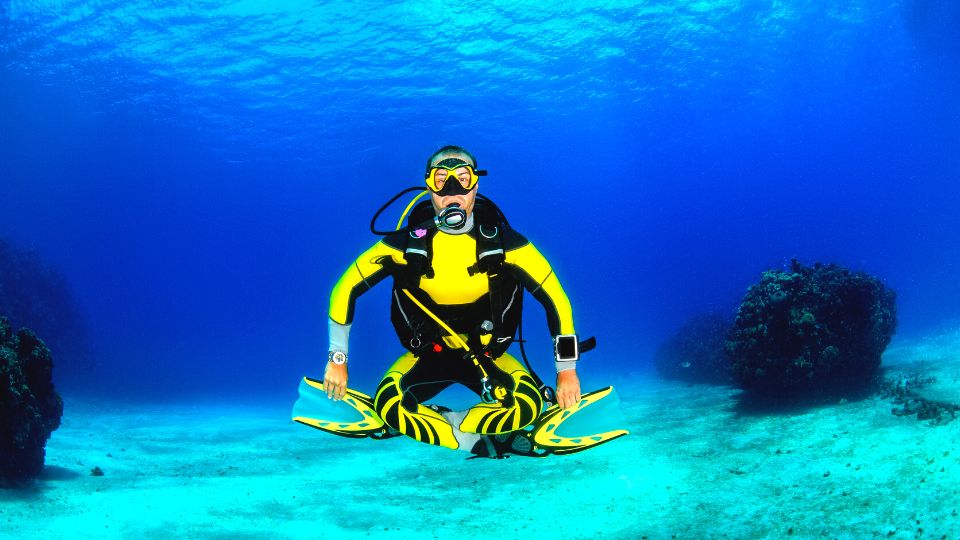A diving regulator is a critical piece of scuba diving equipment that allows a diver to breathe underwater.
It is a complex device that delivers air from a scuba tank to the diver’s mouth at the appropriate pressure and flow rate, making it possible for a diver to explore the underwater world safely. In this article, we will explore how a diving regulator works.
We will discuss the key components of a regulator, including the first stage, second stage, and alternate air source, and how they work together to deliver air to the diver.
What is a Diving Regulator?
A diving regulator is an essential piece of gear that reduces the high pressure of breathing gas from your scuba tank to a level safe for inhalation. It should always be included as part of any diver’s kit.
The initial stage of your regulator attaches to your scuba tank and connects to a submersible pressure gauge. This gauge is essential, as it allows you to monitor air levels in your tank and prevents you from running out underwater.
Basically, the first stage of a regulator regulates your scuba tank by decreasing the high pressure of oxygen inside it to an intermediate pressure. That pressure is then transferred by hose to the second stage and allows you to inhale.
Second stage scuba regulators typically feature a swiveling joint hose adaptor that lets you control the amount of air delivered to you with each inhalation. This helps optimize your breathing techniques for maximum comfort and ease of use.
How a Diving Regulator Works
A diving regulator transforms the high-pressure air in your scuba tank into breathable air that you can breathe while underwater. Without one, the gas pressure could severely injure your lungs.
Different regulators work in this manner. Some models utilize pistons, while others rely on diaphragms. Both designs employ valves to open and close as pressures in different chambers of the first stage shift.
Piston regulators feature fewer moving parts, making them simpler to service. Unfortunately, they’re more vulnerable to corrosion and salt crystallization which could deteriorate them over time.
Diaphragm-type regulators feature two components to their valve opening mechanism: a lever inside an air space and a diaphragm that presses in when pressure from outside increases. This design prevents water from making direct contact with the internal mechanism, making them suitable for dirty or cold waters.
Divers depend on their diving regulator for safety, so it’s essential that it remains functioning optimally at all times. Fortunately, most modern regulators are built with dependability in mind and designed for rugged use under adverse conditions.
Key Components of a Diving Regulator
When considering how a diving regulator functions, three essential components must be taken into account: the first stage, second stage and pressure gauge.
The first stage is located on a tank valve and reduces the high pressure in a cylinder to an intermediate pressure that’s safe for breathing. The second is connected to a low pressure hose, providing divers with oxygen as they inhale.
Scuba regulators typically feature one of two first stages: either a piston or diaphragm. Both types are designed for responsiveness and performance, but their valve opening and closing mechanisms differ.
Diaphragm first stages utilize a lever that opens and closes as the air space within the valve contracts due to external pressure, while piston first stages employ a spring mechanism. Both designs work equally well; however, piston first stages tend to be more responsive than their diaphragm counterparts.
The initial stage also has a port opening to accept the regulator hose attached to the tank. A dust cap, made out of rubber, fits over this opening and seals it shut to prevent water infiltration.
Adjusting the Flow of Air
Divers can adjust the airflow through their diving regulator by turning the Venturi lever (a small knob with plus and minus signs). This setting will result in maximum breathing resistance reduction.
Another way to adjust air flow through a diving reg is by altering its setting on a spring adjustment knob. These fine adjustments can make a significant difference in performance, particularly for divers who use their equipment for deeper dives.
Factors such as depth, breath rate and tank pressure can all influence airflow through a regulator. For instance, diving deeper can make breathing gas denser which leads to higher resistance during inhalation.
To combat this issue, regulator manufacturers have developed a variety of second stages. These range from antifreeze kits and dry valve systems to vacuum assist for easier breathing, inhalation effort adjustment and special balanced valves that minimize resistance when breathing properly. Furthermore, many high-performance regs feature a positive pressure phase in the middle of their inhalation cycle to reduce resistance during high intensity breathing.
Maintaining and Servicing a Diving Regulator
Regulators are an essential piece of dive gear and must be regularly maintained. Neglecting to do so could result in regulator malfunction or cause a dive accident.
Most regulators require servicing at least once annually or after 100 dives. However, this timeline isn’t set in stone and may vary based on how often you use your equipment.
No matter how often you dive, it is essential to regularly inspect your diving equipment and guarantee it’s in optimal condition before each dive. Doing this will guarantee a secure and enjoyable experience while extending the lifespan of your gear.
Maintaining your regulator in top condition requires regular rinsing after each dive and keeping it clean before storing away. Doing this helps prevent salt deposits that can discolor or damage the regulator.
Additionally, always replace the dust cap that fits over the first stage inlet as soon as you disconnect your regulator from a cylinder valve to prevent moisture from entering into this stage. Doing so is especially important since cleaning a regulator with water inside its first stage inlet can be quite challenging.
The Importance of Proper Breathing Techniques
Breathing correctly is the key to improving your diving performance, allowing you to absorb oxygen and eliminate carbon dioxide more effectively, providing you with increased energy and reduced fatigue. Furthermore, it can help you remain calm when faced with challenges underwater.
New divers often over-breath when they first begin diving, adding extra weight to their system. This can be a serious issue as it increases air consumption and makes it more challenging to maintain optimal buoyancy.
Combatting this issue requires learning how to breathe deeply and slowly. Although this is a complex process that requires control, once you master it your breathing will become much more efficient.
Diving requires practicing breathing both above and below the surface, in order to develop a comfortable rhythm that allows you to inhale while your face is out of water and exhale once your head hits bottom. Establishing this rhythm will help ensure that you become an expert diver.
Learning to breathe correctly is a valuable skill for divers, and can make an immense difference in your experience as you navigate the water. Furthermore, it helps you relax more and reduce stress levels both underwater and during surface intervals.
Conclusion
A diving regulator reduces the pressure of air in a scuba tank to a level that’s safe for breathing, making it an essential component of scuba diving. Whether you’re new or experienced, understanding how your diving regulator works can help you choose one that works best for you.
A scuba diving regulator consists of several components, such as the first stage which attaches to the tank; a yoke which tightens the regulator onto the tank; and multiple hoses connecting different parts of it for air supply to various devices. Most regulators feature multiple openings or ports where hoses can be screwed in, allowing divers to position them in various configurations. Furthermore, some have ergonomic elbows or swivels between hose and regulator which allow them to bend and move in response to head movement.


